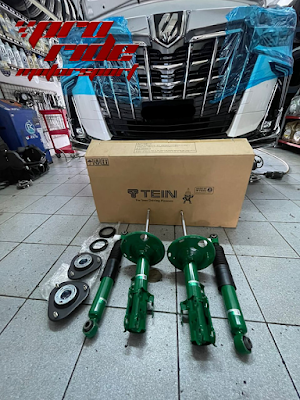Motor Oil Guide! Which oil is right for you?
API'S CERTIFICATION MARK AND SERVICE SYMBOL
identify quality motor oils for gasoline- and diesel-powered vehicles. Oils displaying these marks meet performance requirements set by U.S. and international vehicle and engine manufacturers and the lubricant industry. More than 500 companies worldwide participate in this voluntary program, which is backed by a marketplace sampling and testing program.
THE API CERTIFICATION MARK, ALSO KNOWN AS THE 'STARBUST'
An oil displaying this mark meets the current engine protection standard and fuel economy requirements of the International Lubricant Standardization and Approval Committee (ILSAC), a joint effort of U.S. and Japanese automobile manufacturers. Automobile manufacturers recommend oils that carry the API Certification Mark. See the ILSAC STANDARD FOR PASSENGER CAR ENGINE OILS chart below for descriptions of current and obsolete ILSAC standards.
THE API SERVICE SYMBOL, ALSO KNOWN AS THE 'DONUT'
1. PERFORMANCE LEVEL
Gasoline engine categories (for cars, vans, and light trucks with gasoline engines): Oils designed for gasoline fall under API's "S" (Service) categories. See inside for descriptions of current and obsolete API service categories. Diesel motor oil categories (for heavy-duty trucks and vehicles with diesel engines): Oils designed for diesel engine service fall under API's "C" (Commercial) Categories. See the GASOLINE ENGINES and DIESEL ENGINES charts below for descriptions of current and obsolete API service categories.
2. VISCOSITY GRADE
The measure of an oil's ability to flow at certain temperatures. Vehicle requirements may vary. Follow your vehicles manufacturer's recommendations on SAE oil viscosity.
3. RESOURCE CONSERVING or ENERGY CONSERVING
These designations apply to oils intended for gasoline-engine cars, vans, and light trucks. Widespread use of "Resource Conserving" or " Energy Conserving" oils may result in an overall savings of fuel in the vehicle fleet as a whole.
4. MULTIPLE PERFORMANCE LEVELS
Oils designed for diesel engine service might also meet gasoline engine service. For these oils the designation "C" category first followed by the "S" category. "C" category oils have been formulated primarily for diesel engines and may not provide all of the performance requirements consistent with vehicle manufacturers' recommendations for gasoline-fueled engines.
5. THE API SERVICE SYMBOL WITH CI-4 PLUS
The "CI-4 PLUS" designation identifies oils formulated to provide a higher level of protection against soot-related viscosity increase and viscosity loss due to sheer in diesel engines. When originally introduced, CI-4 PLUS identified CI-4 oils meeting a higher level of performance. CJ-4 oils include all CI-4 PLUS performance requirements. CI-4 PLUS appears in the lower portion of the API Service Symbol "Donut".
The current and previous ILSAC standards and API Service Categories are listed below. Vehicle owners should refer to their owner's manuals before consulting these charts. Oils may have more than one performance level.
For automotive gasoline engines, the latest ILSAC standard or API Service Category includes the performance properties of each earlier category and can be used to service older engines where earlier category oils were recommended.
ILSAC STANDARD FOR PASSENGER CAR ENGINE OILS
GF-5
CURRENT
Introduced in October 2010 for 2011 and older vehicles, designed to improved high temperature deposit protection for pistons and turbocharges, more stringent sludge control, improved fuel economy, enhanced emission control system compatibility, seal compatibility, and protection of engines operating on ethanol-containing fuels up to E85.
GF-4
OBSOLETE
Valid untill September 30, 2011. Use GF-5 where GF-4 is recommended.
GF-3
OBSOLETE
Use GF-5 where GF-3 is recommended.
GF-2
OBSOLETE
Use GF-5 where GF-2 is recommended.
GF-1
OBSOLETE
Use GF-5 where GF-1 is recommended.
GASOLINE ENGINES(FOLLOW YOUR VEHICLE MANUFACTURER'S RECOMMENDATIONS ON OIL PERFORMANCE LEVEL)
SN
CURRENT
Introduced in October 2010 for 2011 and older vehicles, designed to provide improved high temperature deposit protection for pistons, more stringent sludge control, and seal compatibility. API SN with Resource Conserving matches ILSAC GF-5 by combining API SN performance with improved fuel economy, turbocharger protection, emission control system compatibility, and protection of engines operating on ethanol-containing fuels up to E85.
DIESEL ENGINES (FOLLOW YOUR VEHICLE MANUFACTURER'S RECOMMENDATIONS ON OIL PERFORMANCE LEVEL)
CJ-4
CURRENT
For high-speed four-stroke cycle diesel engines designed to meet 2010 model year on-highway and Tier 4 nonroad exhaust emission standards as well as for previous model year diesel engines. These oils are formulated for use in all applications with diesel fuels ranging in sulfur content up to 500ppm (0.05% by weight). However, the use of these oils with greater than 15ppm (0.0015% by weight) sulfur fuel may impact exhaust aftertreatment system durability and/or drain interval. CJ-4 oils are especially effective at sustaining emission control system durability where particulate filters and other advanced aftertreatment systems are used. Optimum protection is provided for control of catalyst stability, soot handling properties, oxidative thickening, foaming, and viscosity loss due to shear. API CJ-4 oils exceed the performance criteria of API CI-4 with CI-4 PLUS, CI-4, CH-4, CG-4 and CF-4 and can effectively lubricate engines calling for those API Service Categories. When using CJ-4 oil with higher than 15ppm sulfur fuel, consult engine manufacturer for service interval.
CI-4
CURRENT
Introduced in 2002. For high-speed, four-stroke engines designed to meet 2004 exhaust emission standards implemented in 2002. CI-4 oils are formulated to sustain engine durability where exhaust gas recirculation (EGR) is used and are intended for use with diesel fuels ranging in sulfur content up to 0.5% weight. Can be used in place of CD, CE, CF-4, CG-4 and CH-4 oils. Some CI-4 oils may also qualify for the CI-4 PLUS designation.
GUIDE TO SAE VISCOSITY GRADES OF MOTOR OIL FOR PASSENGER CARS
Multigrade oils such as SAE 5W-30 and 10W-30 are widely used because, under all but extremely hot or cold conditions, they are thin enough to flow at low temperatures and thick enough to perform satisfactorily at high temperatures. Note that vehicle requirements may vary. FOLLOW YOUR VEHICLE MANUFACTURER'S RECOMMENDATIONS ON SAE OIL VISCOSITY GRADE.
0°C (32°F) 0W-20, 0W-30, 5W-20, 5W-30, 10W-30, 10W-40, 20W-50
-18°C (0°F) 0W-20, 0W-30, 5W-20, 5W-30, 10W-30, 10W-40
Below -18°C (0°F) 0W-20, 0W-30, 5W-20, 5W-30






Comments